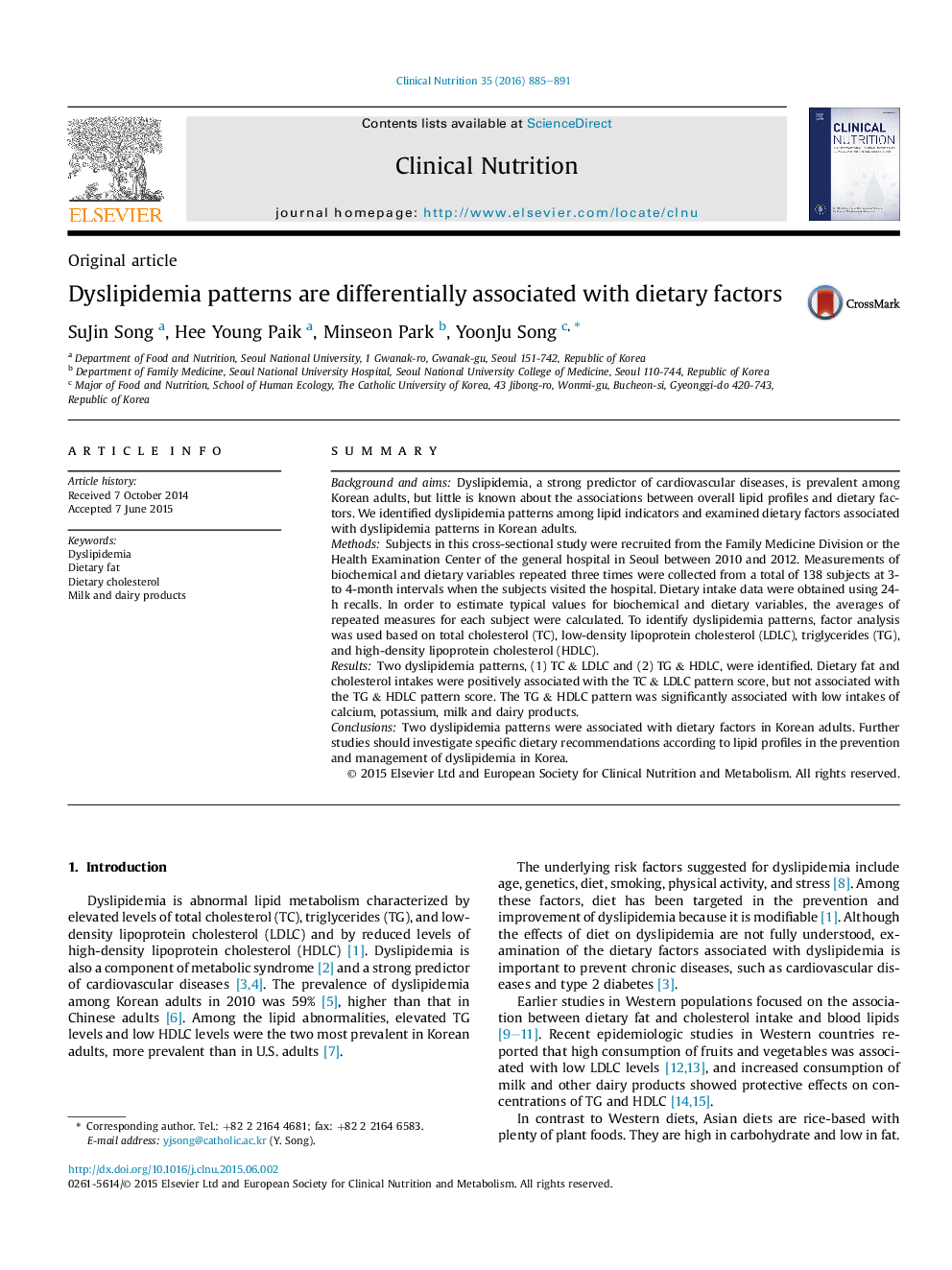| Article ID | Journal | Published Year | Pages | File Type |
|---|---|---|---|---|
| 5872150 | Clinical Nutrition | 2016 | 7 Pages |
â¢Two dyslipidemia patterns were identified: 1) TC & LDLC and 2) TG & HDLC.â¢The dyslipidemia patterns were differentially associated with dietary factors.â¢TC & LDLC pattern was positively related to dietary intakes of fat and cholesterol.â¢TG & HDLC pattern was inversely related to intakes of milk and dairy products.â¢Investigation of dietary recommendations according to lipid profiles is necessary.
SummaryBackground and aimsDyslipidemia, a strong predictor of cardiovascular diseases, is prevalent among Korean adults, but little is known about the associations between overall lipid profiles and dietary factors. We identified dyslipidemia patterns among lipid indicators and examined dietary factors associated with dyslipidemia patterns in Korean adults.MethodsSubjects in this cross-sectional study were recruited from the Family Medicine Division or the Health Examination Center of the general hospital in Seoul between 2010 and 2012. Measurements of biochemical and dietary variables repeated three times were collected from a total of 138 subjects at 3- to 4-month intervals when the subjects visited the hospital. Dietary intake data were obtained using 24-h recalls. In order to estimate typical values for biochemical and dietary variables, the averages of repeated measures for each subject were calculated. To identify dyslipidemia patterns, factor analysis was used based on total cholesterol (TC), low-density lipoprotein cholesterol (LDLC), triglycerides (TG), and high-density lipoprotein cholesterol (HDLC).ResultsTwo dyslipidemia patterns, (1) TC & LDLC and (2) TG & HDLC, were identified. Dietary fat and cholesterol intakes were positively associated with the TC & LDLC pattern score, but not associated with the TG & HDLC pattern score. The TG & HDLC pattern was significantly associated with low intakes of calcium, potassium, milk and dairy products.ConclusionsTwo dyslipidemia patterns were associated with dietary factors in Korean adults. Further studies should investigate specific dietary recommendations according to lipid profiles in the prevention and management of dyslipidemia in Korea.
